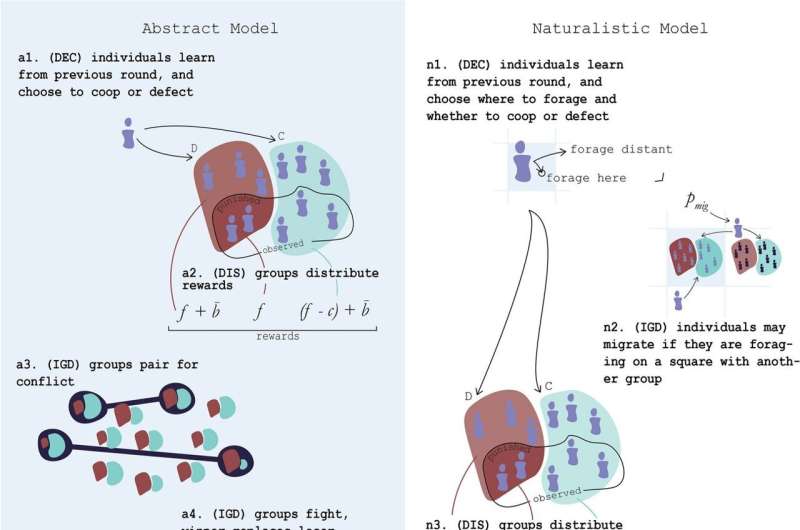This article has been reviewed according to Science X's editorial process and policies. Editors have highlighted the following attributes while ensuring the content's credibility:
fact-checked
peer-reviewed publication
trusted source
proofread
New study helps explain why people cooperate when no one is looking

That strong urge many people feel to abide by social norms even when it is individually harmful may have its roots in Darwinian fitness, according to a new study published in Behavioral Ecology and Sociobiology.
The research uses agent-based modeling to provide an evolutionary mechanism that helps explain what keeps people cooperating even when no one is looking. It also points to new ways that humanity's norm-internalizing tendencies could be harnessed to benefit societies, businesses, and other organizations.
"Even when only a minority of the population internalizes norms, it can have a big impact in terms of getting people to cooperate more and for longer," says Victor Odouard, a former predoctoral researcher at SFI and lead author of the study. "Our research offers an evolutionary explanation for why people will work together for the benefit of the group, even when it would be better for them, individually, not to do so."
Previous modeling research has shown that a high level of norm internalization in a population can boost cooperation among groups of virtual agents evolving over time as they compete for resources. However, this past work has typically assumed that there are a lot of norm internalizers in a population to begin with.
By contrast in their study, Odouard and Cornell University colleagues Diana Smirnova and Shimon Edelman utilized an agent-based simulation where population levels of norm internalizers and overall cooperation between groups of competing virtual agents both started out low. They also allowed for the possibility of norm internalizers dying out if they could not compete with other, selfish agent types.
The results of their analysis show that norm internalizers almost always survive at relatively low levels compared to the rest of the population. Nevertheless, this select group of norm internalizers creates a dynamic that leads to increased and sustained cooperation among other agents. This effect results in a small number of highly cooperative groups outcompeting other less cooperative groups for resources, enabling them to grow and spread.
"All you need is one group that has a lot of cooperators and suddenly that group is going to start outcompeting all the others," Odouard said. "In effect, norm internalization creates an environment that polarizes groups, so that the very cooperative groups can outcompete the uncooperative groups more decisively. This allows the cooperative groups, and the norms they possess, to multiply in number."
More information: Victor Vikram Odouard et al, Polarize, catalyze, and stabilize: how a minority of norm internalizers amplify group selection and punishment, Behavioral Ecology and Sociobiology (2023). DOI: 10.1007/s00265-023-03380-0
Journal information: Behavioral Ecology and Sociobiology
Provided by Santa Fe Institute





















